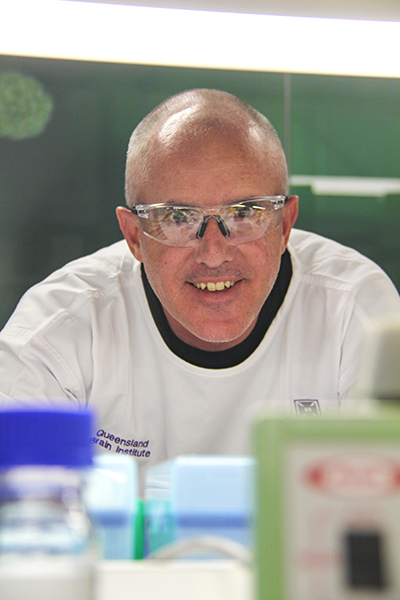Saturated fatty acid levels unexpectedly rise in the brain during memory formation, according to QBI research, opening a new avenue of investigation into how memories are made.
Dr Tristan Wallis, from Professor Frederic Meunier’s laboratory said traditionally, polyunsaturated fatty acids were considered important to health and memory, but this study highlighted the unexpected role of saturated fatty acids.
Fat levels changed as memories formed
“We tested the most common fatty acids to see how their levels changed as new memories were formed in the brain,” Dr Wallis said.
“Unexpectedly, the changes of saturated fat levels in the brain cells were the most marked, especially that of myristic acid, which is found in coconut oil and butter.
“In the kitchen, saturated fats are those which are solid at room temperature while unsaturated fats are normally liquid.

Fats are vital for communication
“The brain is the fattiest organ in the body, being 60 per cent fat, which provides energy, structure and assists in passing messages between brain cells.
“Fatty acids are the building blocks of lipids or fats and are vital for communication between nerve cells, because they help synaptic vesicles — microscopic sacs containing neurotransmitters—to fuse with the cell membrane and pass messages between the cells.
“We have previously shown that when brain cells communicate with each other in a dish, the levels of saturated fatty acids increase.”
Saturated fat levels increased
Researchers have found that fatty acid levels in the rat brain, particularly saturated fatty acids, increase as memories are formed, but when they used a drug to block learning and memory formation in rats, the fatty acid levels did not change.
The highest concentration of saturated fatty acids was found in the amygdala — the part of the brain involved in forming new memories specifically related to fear and strong emotions.
Study contributor and QBI Director Professor Pankaj Sah said the work opened a new avenue on how memory was formed.
Understanding how memories are made
“This research has huge implications on our understanding of synaptic plasticity — the change that occurs at the junctions between neurons that allow them to communicate, learn and build memories,” Professor Sah said.
This work is published in Nature Communications and supported by National Health and Medical Research Council (NHMRC) and the Australian Research Council Grant.





